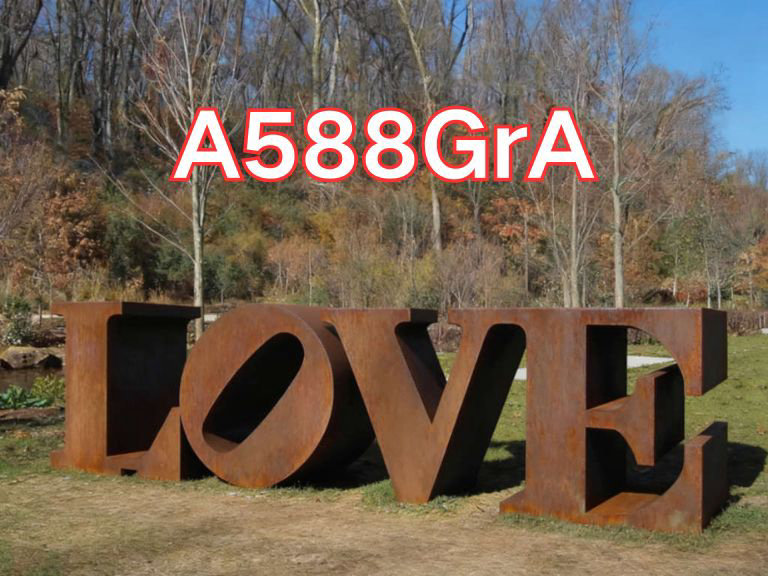

S355J2W
S355J2W is a high-strength, low-alloy weathering structural steel plate, with its designation conforming to the European standard EN 10025-5:2019 "Hot rolled products of structural steels—Part 5: Technical delivery conditions for structural steels with improved atmospheric corrosion resistance". This standard is widely adopted across Europe and globally for weathering steels, and S355J2W, as a key grade within it, is extensively used in engineering fields where high material strength, toughness, and corrosion resistance are required.
The designation "S355J2W" has a clear meaning:
"S" stands for "Structural steel," indicating its use in load-bearing structures.
"355" indicates the specified minimum yield strength of 355 MPa, placing it in the medium-to-high strength category, capable of meeting the load-bearing requirements of most structural engineering applications.
"J2" represents the quality grade, where "J" is the code for the impact test series, and "2" specifies that the material must undergo a Charpy V-notch impact test at -20°C, with an average absorbed energy (KV2) of no less than 27 J. This requirement is significantly stricter than that of Grade J0 (tested at 0°C), meaning S355J2W maintains good toughness and resistance to brittle fracture at much lower temperatures, making it suitable for colder climates or applications with higher safety demands.
"W" stands for "Weathering," clearly identifying its resistance to atmospheric corrosion.
The primary application of S355J2W steel plate is in the fabrication of various critical load-bearing structures that are permanently exposed to harsh atmospheric environments. Thanks to its high strength, excellent low-temperature toughness, and superior weathering performance, it has become an ideal choice for modern infrastructure projects. Typical applications include:
Bridge Engineering: Particularly suitable for main girders, bridge decks, and trusses in highway and railway bridges located in cold regions, coastal areas, or areas with large temperature variations—core load-bearing components—that effectively ensure the long-term safety and durability of bridges under severe conditions.
Architecture: Used in exposed structural steel for high-rise buildings, large-span sports arenas, airport terminals, and other large public buildings, as well as landmark structures in northern cold regions, satisfying both structural strength and safety requirements while enabling maintenance-free or low-maintenance operation.
Transportation: Used in the manufacture of containers, heavy-duty truck bodies, and traffic signal towers—equipment subjected to significant dynamic loads and harsh climatic conditions.
Industrial Facilities: Widely used in transmission towers, substation frameworks, storage silos, pipe supports, and wind turbine towers for outdoor installations, especially in cold climates or areas with significant industrial pollution.
Its main characteristics include:
Excellent Atmospheric Corrosion Resistance: By adding alloying elements such as copper (Cu), chromium (Cr), and nickel (Ni), the steel forms a dense, stable, and well-adhered protective rust layer in the atmosphere, effectively slowing down the corrosion process. Its corrosion resistance is far superior to that of ordinary carbon steel.
High Strength and Superior Low-Temperature Toughness: The combination of a high yield strength of 355 MPa and impact toughness requirements at -20°C ensures excellent resistance to impact and brittle fracture while maintaining high strength.
Maintenance-Free: Can be used without painting in most atmospheric environments, significantly reducing lifecycle maintenance costs.
Good Weldability and Workability: Easy to cut, bend, and weld, facilitating construction and installation.

Ultrasonic Testing (UT)
A key non-destructive testing technique that uses high-frequency sound waves to detect internal flaws in steel plates. The probe emits sound waves, which reflect when encountering defects such as cracks or inclusions. The receiver captures the echoes, enabling precise determination of defect location and size. With high sensitivity, strong penetration, and fast inspection speed, UT effectively ensures internal quality, widely used in the production of heavy plates, pressure vessel plates, and other high-end products to guarantee safety and reliability.

Magnetic Particle Testing (MT)
A common surface inspection method that magnetizes the workpiece, causing leakage magnetic fields at surface or near-surface defects like cracks or inclusions, which attract magnetic particles to form visible indications. Simple to operate and highly sensitive, MT is suitable for rapid inspection of surface and near-surface flaws in ferromagnetic materials, widely used for online or offline inspection of plate edges, ends, and welds, ensuring product quality and safety.

Penetrant Testing (PT)
A non-destructive method for detecting surface-breaking flaws. A penetrant liquid is applied to the cleaned steel surface, allowing it to seep into defects such as cracks or pores. After removing excess penetrant, a developer is applied, causing the trapped penetrant to bleed out and form visible indications. Simple and cost-effective, PT is suitable for inspecting surface defects in various non-porous materials, commonly used for welds, castings, and complex components, effectively ensuring surface quality of steel plates.










